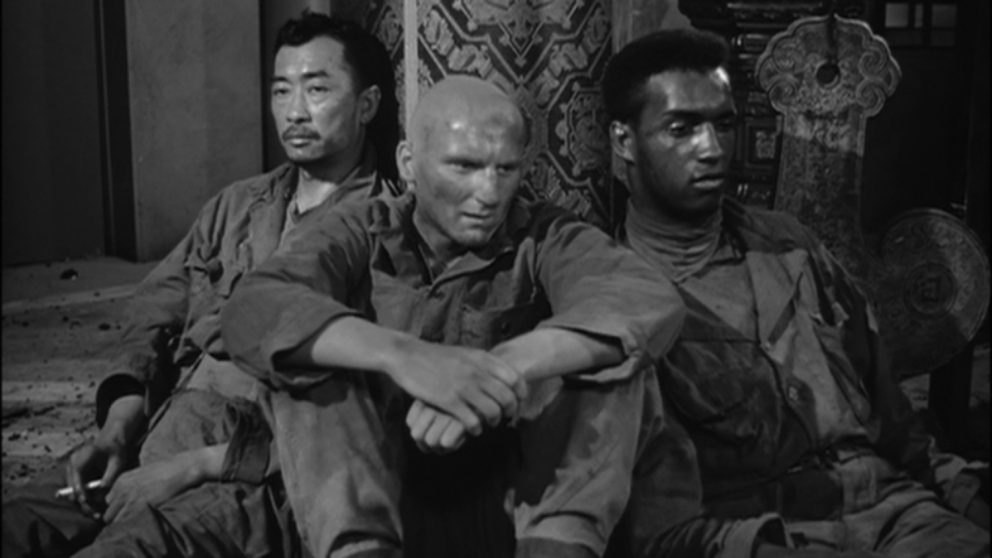From the Big Red One to ‘The Big Red One’ — War, Movies and Sam Fuller

Editor’s note: This article was originally published by The Abstract, NC State’s research blog.
Movies are important. From obscure arthouse films to big-budget blockbusters, movies are experiences shared by the audience; they reflect our world back to us, often offering insights — or asking questions — that we might never have thought of on our own. But what shapes the filmmakers behind the movies?
A new book by NC State film studies professor Marsha Gordon tackles this question, focusing in depth on the war films of director, producer and screenwriter Sam Fuller. Fuller made more than 20 films between 1949 and 1990, many of them influenced — in ways large and small — by his experiences as a soldier in the 1st Infantry Division (the “Big Red One”) during World War II.

The book, Film is Like a Battleground, delves into Fuller’s work ranging from the 16mm footage he shot as an amateur filmmaker while serving in the Big Red One to 1980’s The Big Red One – which has been called one of the 500 greatest movies of all time.
We talked with Gordon about Sam Fuller, his war films and which Fuller movie you should watch (if you could only watch one).
The Abstract: When did you first become interested in Sam Fuller and his films?
Marsha Gordon: I came to Fuller rather late in the game. In fact, I saw my first Fuller film when I was a Master’s student at the University of Maryland in the 1990s. I was taking a class on 1950s film and culture from one of the great thinkers and writers about American film, Robert Kolker. The film he showed the class was Pickup on South Street, which I write about in Film is Like a Battleground all these years later. I was immediately drawn to it and to the many shocks and surprises it offered. My interest in that film led me to seek out the other films Fuller made in this time period and beyond.
TA: What sets Fuller aside as an auteur?
Gordon: I just finished teaching a course on Alfred Hitchcock and Billy Wilder in the fall of 2016 at NC State, so I’ve spent a lot of time recently thinking about the subject of authorship and film. To my mind, Fuller had an unusual dedication to dealing with issues that personally mattered to him in the movies he wrote and directed, despite the significant difficulties in doing this on screen.
The most recurrent and important of those subjects had to do with war and patriotism. And right alongside those concerns were questions about humanity and American society that were not commonly asked on the big screen in the 1950s, especially having to do with race. Like Billy Wilder, Fuller was a writer and also a frequent producer of his own films – so he often had a significant amount of control over their content, which was both liberating in terms of his personal creativity and challenging in terms of his responsibility for their political content.
TA: Normally, when we think about assessing a filmmaker’s body of work, we want to consider all of his films. Why did you decide focus solely on his war films?

Gordon: There are have been a number of books published about Fuller over the years, though nowhere near as many as about his contemporaries like John Ford, Nicholas Ray, Alfred Hitchcock, and so on. Fuller fought in World War II and obsessively documented it: in personal and official military journals as well as in journalistic writing, on 16mm film, in photographs, and in screenplays and books. It was the experience that defined his psyche and his moral compass, and informed his thinking about the world and the American way of life.
It just seemed natural to me to isolate his war films, starting with the 16mm films he shot during and after the war (including the aftermath of the liberation of a Nazi camp) and moving on to his combat films as well as his cold war films. This really gave me a sharp focus on the central idea that Fuller dealt with throughout his career. It also allowed me to explore the nature of war filmmaking in the United States and the intense scrutiny it received in the 1950s in particular. I was also able to delve into Fuller’s difficult relationships with the FBI, the Department of Defense, the Production Code Administration, and the other military watchdog organizations that had a stake in how American military and political interests were represented at the time.
TA: Focusing on just one part of Fuller’s body of work could sacrifice some of the context provided by other films in his canon, such as his Westerns or later films, like White Dog. How do you balance the desire to focus on a single genre with the absence of context provided by Fuller’s other films?
Gordon: Well, I do acknowledge the fact that combat was the overarching metaphor for Fuller’s career, even in the films he made that had nothing seemingly to do with war. But since other books have already been published about Fuller that provide a career overview, I didn’t feel obligated to repeat that. Also, this focus allowed me to dig deep. I’m working with archival sources, such as the documents in Fuller’s Department of Defense file at the National Archives in Washington D.C., which nobody has discussed before.
Limiting the number of Fuller films I discuss in the book – eight feature films, plus several other shorter, nontheatrical films – allowed me to be thorough in a way that I believe does justice to those works.
TA: I’m guessing you watched Fuller’s films quite a few times while working on the book. After repeated viewings, which one stands out as a favorite? What is it about that film that makes it stand out?
Gordon: That’s a cruel question! I think I have to go with Pickup on South Street. Maybe it’s that it was the first Fuller film that I saw. Maybe it’s the great performances from Richard Widmark, Jean Peters, and Thelma Ritter (who was nominated for a Best Supporting Actress Academy Award for her role). Maybe it’s the use of extreme close-ups and jarring camera movements, which sets the film apart stylistically. Maybe it’s the fantastic dialogue and playful use of street slang, which Fuller must have had so much fun working with. Maybe it’s the treatment of the New York City criminal underworld, the police, and the FBI – with the criminal coming out on top. It also has one of the most poetic, haunting and dark murder scenes in the history of American film. I could go on and on, but if you haven’t seen it by all means do!
If this interview whets your appetite for talking about movies, please join Gordon for a screening of Fuller’s 1951 film The Steel Helmet Feb. 15 at 7 p.m. in the auditorium of Hunt Library on NC State’s Centennial Campus. Gordon will introduce the film and conduct a Q&A after the screening. Copies of Film is Like a Battleground will also be available for sale. Directions are available here.
- Categories:


